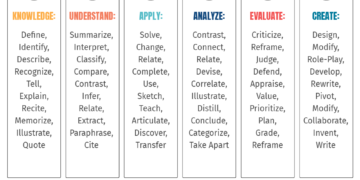Curiosity Is The Precursor Of Innovation
As machines become increasingly more accurate and intelligent, we humans will need to sharpen our cognitive skills. One of your primary responsibilities as a Learning and Development leader is to ensure that you empower the workforce to develop the four sets of skills that are critical to thriving in 2030 [1]. A series of ten articles, “eLearning Skills 2030,” explores all these skills to make your job easier. This article is one in the “eLearning Skills 2030” series, and it explores curiosity: why it is a critical skill, and how to sharpen it.
What Is Curiosity?
According to the Cambridge Dictionary, curiosity is an “eager wish to learn.” Astrophysicist Mario Livio says that while everyone is curious, the degree of curiosity differs, depending on the person and the situation [2]. He defines curiosity as perceptual and epistemic. Perceptual curiosity is what we feel when we encounter a new thing that surprises us or does not align with what we think we already know. This curiosity drives our need to find information or “google” things. Epistemic curiosity is what we pursue out of pleasure and out of anticipation for a reward. Epistemic curiosity drives learning, scientific research, and education. Another renowned astrophysicist Neil deGrasse Tyson reminds us that curiosity and inquiry rewire our brains to seek new knowledge and solve new problems [3]. In his book Curious, Ian Leslie describes curious learners as people who like to go deep and wide when learning. Because curious learners are generalists in thought and practice, their jobs are the least likely to be replaced by AI.
Why Is Curiosity Important?
According to Harvard Business School Professor Francesca Gino, curiosity is a critical skill for individuals and a foundational value for organizations because it can drive performance outcomes. Fostering curiosity helps leaders be more agile in problem-solving and adaptive to change. Curious learners are better at exploring new ideas, thinking differently, and finding new solutions. Additionally, curiosity helps strengthen trust between leaders and employees and drives collaboration across teams who strive to learn and problem-solve together. Curiosity is critical in any role because it propels you to do better by asking more questions, learning from others, and always looking for ways to do your job better.
How Do You Spark Curiosity?
There are several ways to spark curiosity, including asking open-ended questions starting with “how might we” and “what if,” reading more, exploring a topic in different modalities (e.g., article, video, and podcast), traveling, and tracking what sparks your curiosity among others.
1. Ask Open-Ended Questions Starting With “How Might We” And “What If”
When Elon Musk created SpaceX, which question is it most likely he asked: “how do we create private space travel for individuals?”, or “what if we create a private space travel company for individuals?” The power of “what if” questions is that they open up new possibilities and make an outcome probable that may, previously, have seemed impossible.
2. Read
Reading is fantastic because it is relatively inexpensive, you can do it almost anywhere, and it can take you places you never fathomed. Reading can help you learn more in your area of expertise, explore new concepts, dive into others’ mindsets, and explore new possibilities. You can learn at least one new idea or concept from any book, which is quite powerful because learning fires up the synapses in your brain. New brain connections can spark new ideas and new ways to look at things and solve problems.
3. Explore A Topic In Various Modalities
One of the best ways to spark your curiosity is to explore a topic through a book, an article, a video, and a podcast. The multiple modalities will spark a different angle and perspective on the topic that you may not have considered previously. These various angles will likely prompt you to explore the topic deeper or reveal other paths or topics that you were unaware of, resulting in brand new knowledge.
4. Try Out New Experiences And Document Them
Research shows that you can increase your curiosity if you do things that you have not explored before, including learning something new, watching a documentary, taking a trip, visiting a new neighborhood, or even trying a new cuisine—doing new things that take you out of your comfort zone increase and spark your curiosity. Observing and taking notes about your observations and explorations can spark curiosity in different ways. Documenting what sparks your curiosity, whether in a notebook, an app, or on your phone, can generate new ideas and questions and reveal new paths
Sparking Curiosity At Your Organization
Curiosity is a foundational skill in thinking differently, problem-solving, and innovating. Curiosity goes hand in hand with asking good questions, developing a growth mindset, and tackling change, and therefore, it is a critical skill to develop in your teams. In addition to encouraging your team members to apply some or all of the practices described above, it is also important to cultivate innovation at the organizational level. You can hold monthly “spark” meetings where the team spends 50 minutes asking “what if” questions and 10 minutes capturing, prioritizing, and distilling the key questions to go after in new product idea generation or design. Another way to practice curiosity at the organizational level is through benchmarking other industries and exploring how to tackle a process challenge to deliver a product or service to the customer. Being curious as an organization about other industries can spark innovation at scale and illuminate new ways to solve problems, design, develop, and deliver products and services to your customers.
As a Learning and Development leader, you have the dual responsibility of developing and modeling curiosity yourself, as well as encouraging others to do the same. Fostering opportunities for your team and your employees to develop curiosity is vital for your organization’s growth and successful business outcomes today, leading to 2030, and beyond.
References:
[1] 4 Must-Have Leadership Skills For 2030
[2] The ‘Why’ Behind Asking Why: The Science of Curiosity
[3] Neil deGrasse Tyson – Harness Your Cosmic Curiosity




















